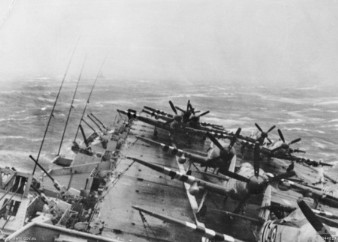

The crisis in Korea originated in the closing phases of the Second World War, when control of the Korean peninsula, formerly occupied by Japan, was entrusted to the Allies, and the United States and the Soviet Union divided responsibility for the country between them at the 38th parallel.
Over the course of the next few years, the Soviet Union fostered a strong communist regime in the north, while the US supported the government in the south; by mid-1950, tensions between the two zones, each under a different regime, had escalated to the point where two hostile armies were building up along the border.
On 25 June a North Korean army finally crossed into the southern zone and advanced towards the capital, Seoul. The city fell in less than a week, and North Korean forces continued their southward drive towards the strategically important port of Pusan.
Within two days, the US had offered air and sea support to South Korea, and the United Nations Security Council asked all its members to assist in repelling the North Korean attack. Twenty-one nations responded by providing troops, ships, aircraft and medical teams. Australia’s contribution included 77 Squadron of the RAAF and the 3rd Battalion, Royal Australian Regiment (3 RAR), both of which were stationed in Japan at the time as part of the British Commonwealth Occupation Force.
